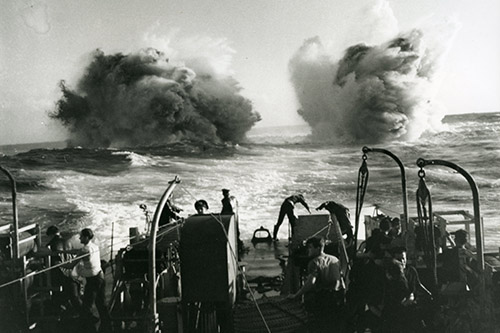The Battle of the Atlantic
The Battle of the Atlantic was the longest battle of the Second World War and was fought at sea from 1939 to 1945. Much of the burden of fighting the battle fell to the RCN which, at the outbreak of the war, was comprised of only six destroyers and a handful of smaller vessels.
Over the course of 2,075 days Allied naval and air forces fought more than 100 convoy battles and performed as many as 1,000 single ship actions against submarines and warships of the German and Italian navies. Primary targets for the Germans and Italians were the convoys of merchant ships carrying vital, life-sustaining cargo from North America to Europe.
Canada’s navy was instrumental in turning the tide of the war, and by the conflict’s conclusion had grown to become one of the largest in the world. The RCN destroyed or shared in the destruction of 33 U-Boats and 42 enemy surface craft. In turn, it suffered 2,210 fatalities, including nine women, and lost 33 vessels.
Today, our sailors continue to proudly represent Canadians at home and on the world stage.
The Royal Canadian Navy has become the country’s “force of first resort” in response to world crises. As a result of its performance during the Battle of the Atlantic, the RCN has been deployed into harm’s way as a vanguard Canadian military response since 1945. It was deployed in the Korean War, the Suez crisis, the Cuban missile crisis, the First Gulf War, following the events of 9/11, the humanitarian relief effort following Hurricane Katrina in 2005, and in response to the devastating 2010 earthquake in Haiti.
We honour our past by remembering the tremendous efforts Canadian sailors made in fulfilling their commitment to secure Allied victory, and we salute the RCN’s resolute path forward in remaining committed to the safety, security and defence of Canada at home and abroad.

Cpation
Depth charge explodes astern of HMCS Ottawa (H31) during trials.